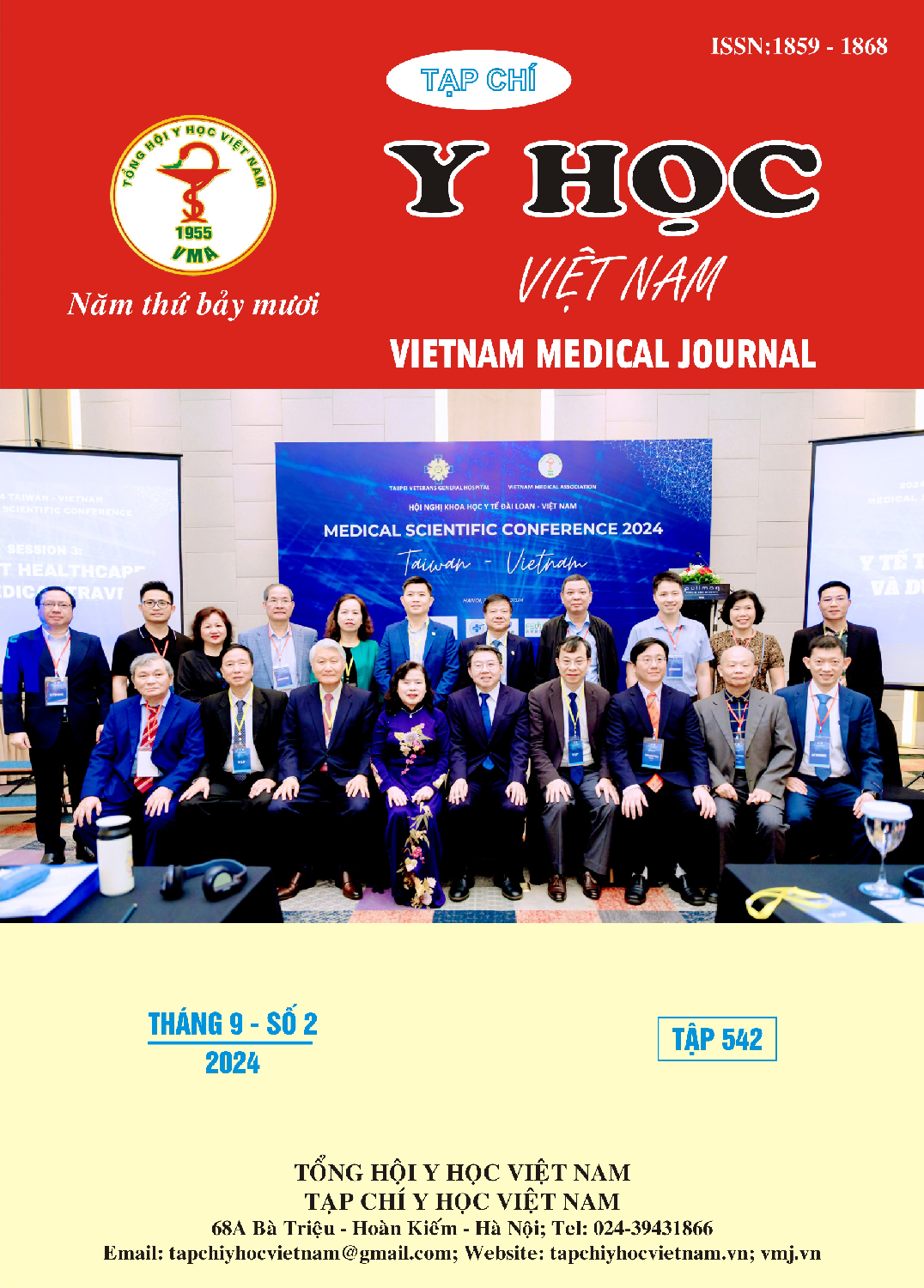ASSESSMENT OF THE RELATIONSHIP BETWEEN LEVEL OF SpO2/FiO2 AND OUTCOMES IN PATIENTS WITH ARDS
Main Article Content
Abstract
Objective: The aim of this study was to evaluate whether level SpO2/FiO2 (S/F) ratio associated with outcomes in patients with ARDS. Methods: In this prospective observational study, we enrolled 90 patients with ARDS who were in Surgical intensive care unit (SICU) at Vietnam – Germany Friendship Hospital from March 2023 to September 2023. To determine the relationship between level of S/F and primary outcomes: 28 - day mortality, mechanical ventilation (days), ICU length of stay and the results of weaning ventilator included simple weaning, difficult weaning, prolonged weaning. Results: Overall 28-day mortality was 30% and there was no significant differences between patients with initial mild, moderate, and severe ARDS (p > 0,05). On day 3 reclassification, the hospital mortality rates were as follows: mild (14,9%); moderate (23,5%); and severe ARDS (37,5%) (p < 0,05). Patients with improving severity on day 3 could help to predict difficult weaning, prolonged weaning (p < 0,05) AUC = 0,738 (95% CI: 59,5% - 85,7%) and 0,646 (95% CI: 48,2% - 81%); respectively. Conclusions: S/F ratios after 48h of ARDS onset could help to divide patients into subgroups with greater separation in terms of mortality. Patients with improving severity on day 3 could help to predict difficult weaning, prolonged weaning.
Article Details
Keywords
ARDS; definition; SpO2/FiO2 ratio; weaning ventilator.
References
2. Madotto F, Pham T, Bellani G, et al. Resolved versus confirmed ARDS after 24 h: insights from the LUNG SAFE study. Intensive Care Med. 2018; 44(5): 564-577. doi:10.1007/s00134-018-5152-6
3. Rice TW, Wheeler AP, Bernard GR, Hayden DL, Schoenfeld DA, Ware LB. Comparison of the Spo2/Fio2 Ratio and the Pao2/Fio2 Ratio in Patients With Acute Lung Injury or ARDS. Chest. 2007;132(2):410-417. doi:10.1378/chest.07-0617
4. Bellani G, Laffey JG, Pham T, et al. Epidemiology, Patterns of Care, and Mortality for Patients With Acute Respiratory Distress Syndrome in Intensive Care Units in 50 Countries. JAMA. 2016;315(8):788-800. doi:10.1001/ jama.2016.0291
5. Lemos-Filho LB, Mikkelsen ME, Martin GS, et al. Sex, Race, and the Development of Acute Lung Injury. Chest. 2013;143(4):901-909. doi:10.1378/chest.12-1118
6. Gorman EA, O’Kane CM, McAuley DF. Acute respiratory distress syndrome in adults: diagnosis, outcomes, long-term sequelae, and management. The Lancet. 2022;400(10358):1157-1170. doi: 10.1016/S0140-6736(22)01439-8
7. Chiu LC, Lin SW, Liu PH, et al. Reclassifying severity after 48 hours could better predict mortality in acute respiratory distress syndrome. Ther Adv Respir Dis. 2020;14: 1753466620936877. doi:10.1177/ 1753466620936877
8. Roozeman JP, Mazzinari G, Serpa Neto A, et al. Prognostication using SpO2/FiO2 in invasively ventilated ICU patients with ARDS due to COVID-19 – Insights from the PRoVENT-COVID study. J Crit Care. 2022; 68:31-37. doi:10.1016/ j.jcrc.2021.11.009


